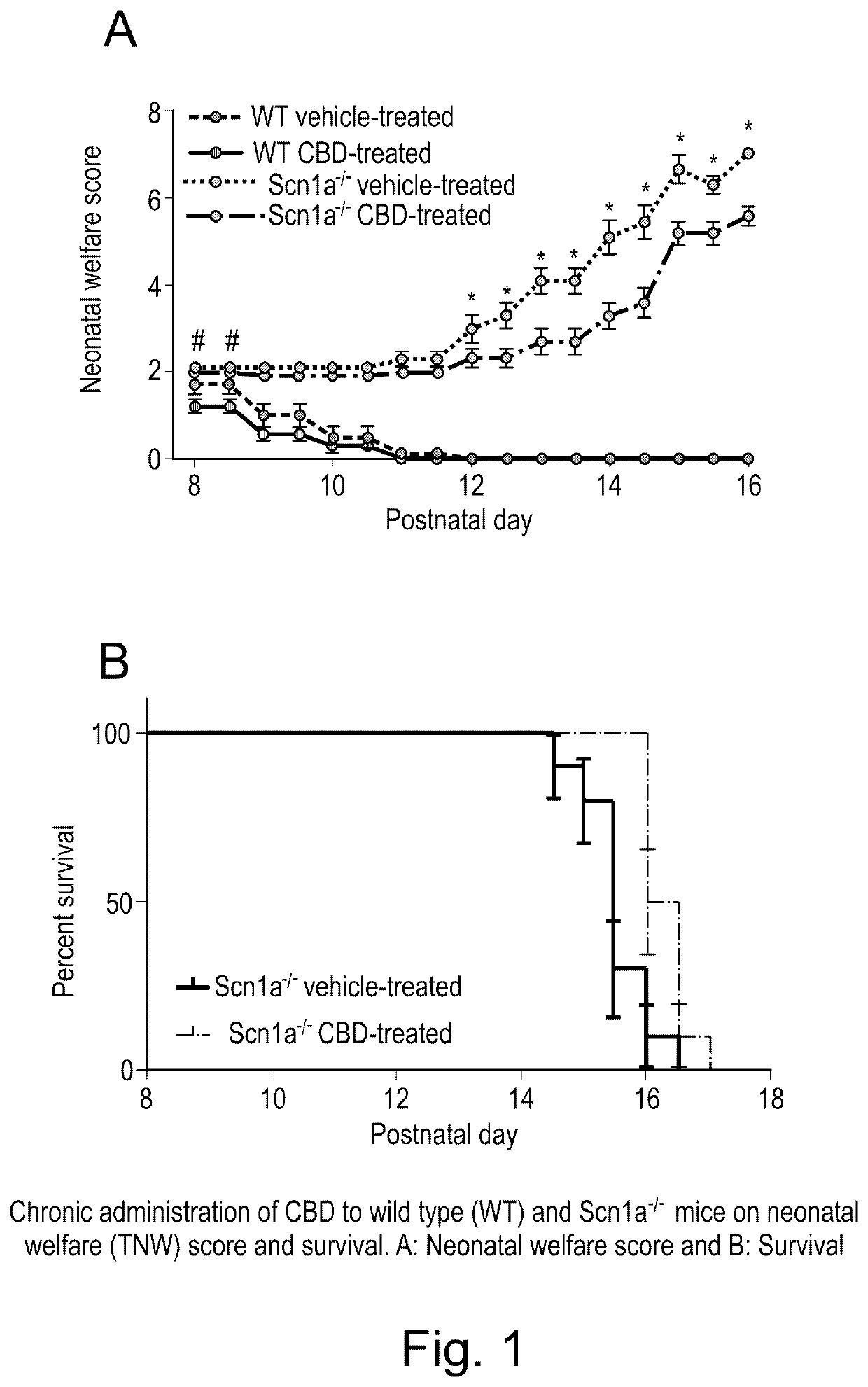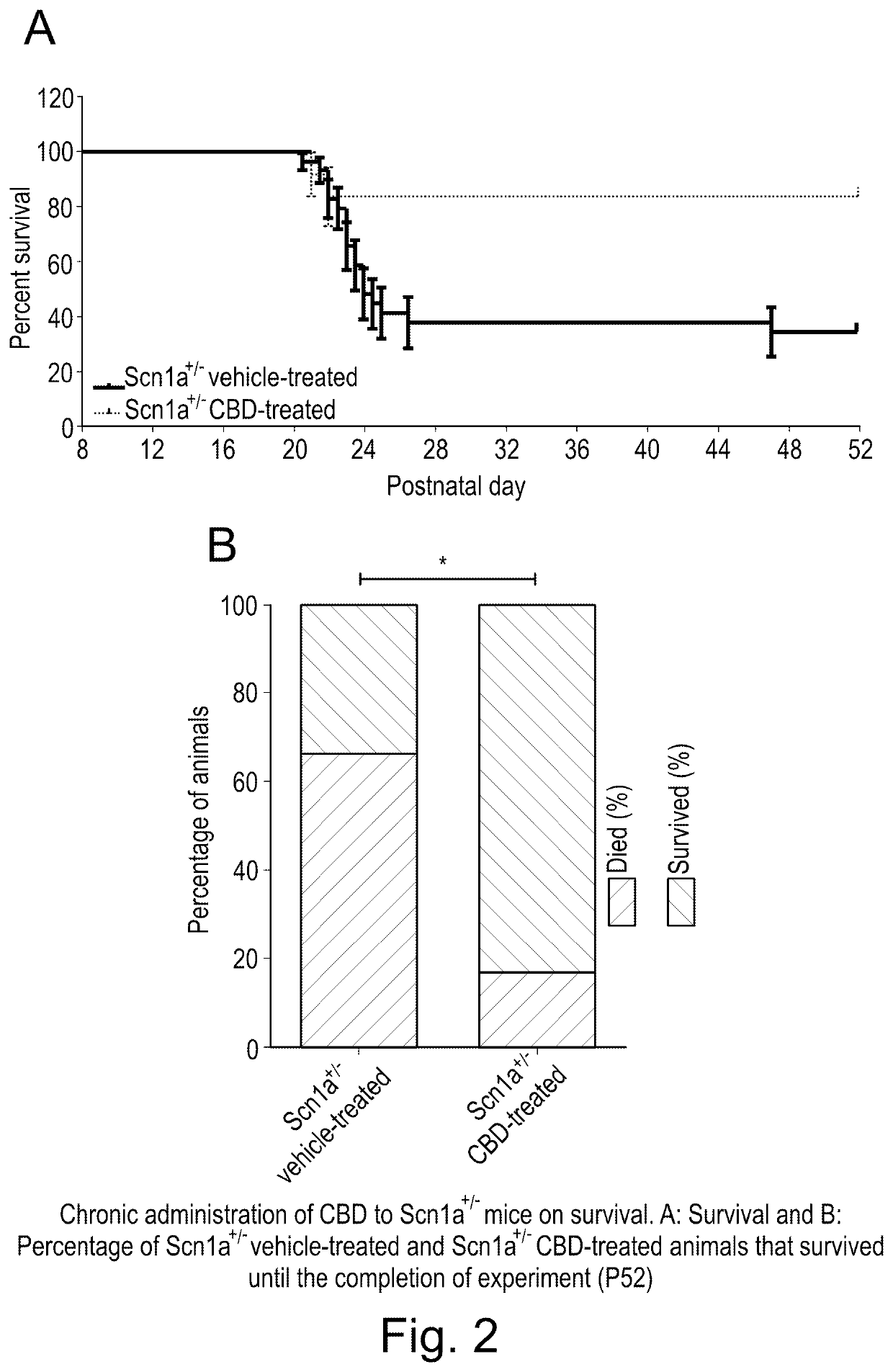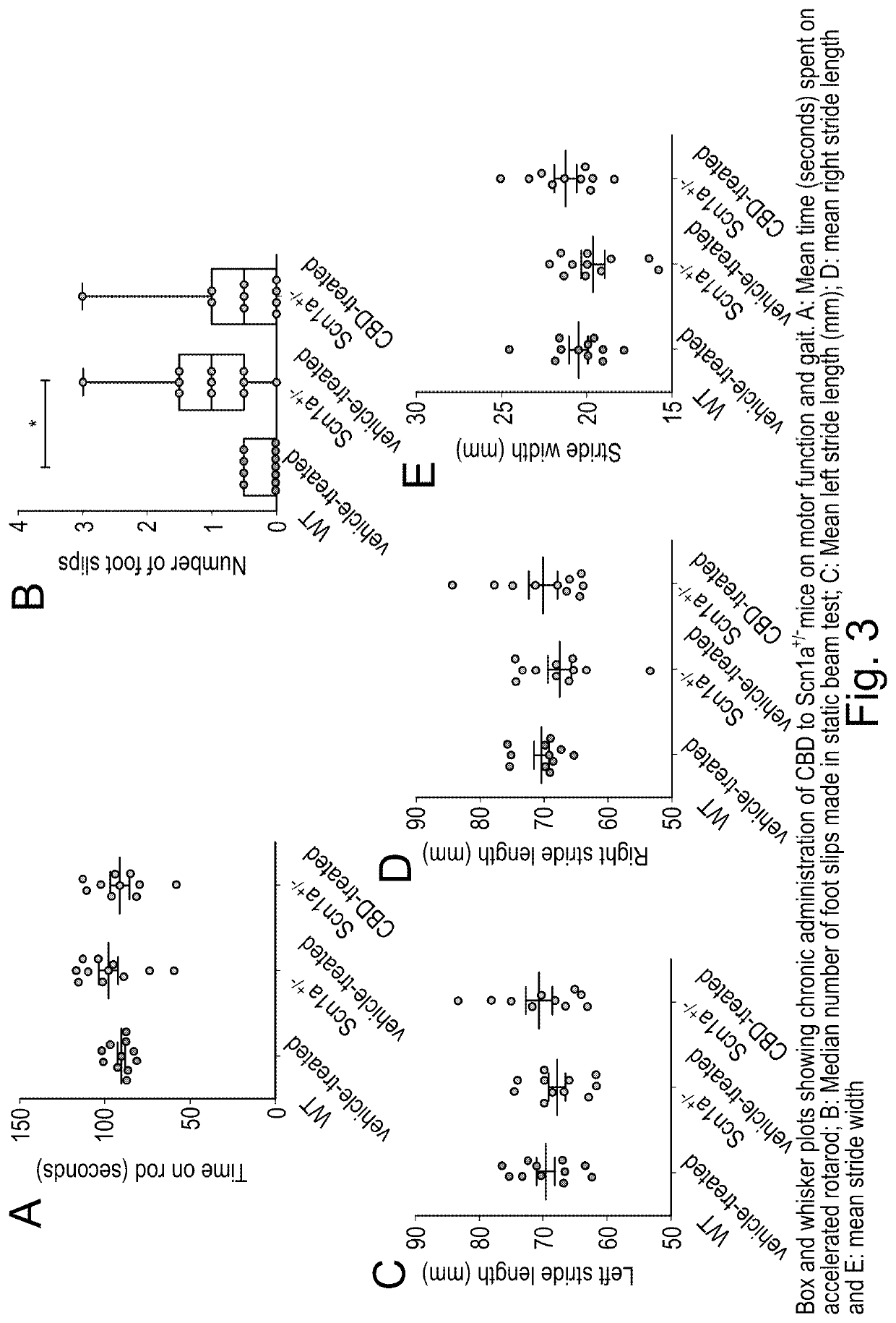Use of cannabidiol in the treatment of dravet syndrome
a technology of cannabidiol and dravet syndrome, which is applied in the direction of nervous disorders, drug compositions, plant/algae/fungi/lichens ingredients, etc., can solve the problems of difficult treatment, cognitive, behavioral and motor delays, and inability to obtain seizure freedom, so as to prolong the survival, improve the welfare of neonatal patients, and improve the effect of behavioural comorbidities
- Summary
- Abstract
- Description
- Claims
- Application Information
AI Technical Summary
Benefits of technology
Problems solved by technology
Method used
Image
Examples
example 1
ol (CBD) in an Acute and Chronic Mouse Model of Dravet Syndrome to Test Survival and Comorbidity
Methods
Study I: Assessment of Neonatal Welfare and Survival in Scn1a− / − Mice
Animals:
[0076]129S-Scn1atm1Keammjax heterozygote mice (Jackson Laboratory, USA) were maintained in and bred together to obtain Scn1a− / − and wild type (WT) animals used for this Study (n=10 per group).
[0077]The maternal behaviour of the dams was also assessed simultaneously to ensure that any of the parameters observed in the study animals (Scn1a− / − / WT mice) were not affected by the dam's behaviour. In this study, dam scores remained 0 throughout the study and so the responses of the pups were not considered to have been affected by variations in maternal behaviours. At the end of the study, animals were humanely killed by a Schedule 1 method (cervical dislocation).
Experimental Design:
[0078]Following genotyping, animals were randomly divided into four groups WT vehicle-treated, WT CBD-treated, Scn1a− / − vehicle-trea...
PUM
| Property | Measurement | Unit |
|---|---|---|
| Fraction | aaaaa | aaaaa |
| Fraction | aaaaa | aaaaa |
| Fraction | aaaaa | aaaaa |
Abstract
Description
Claims
Application Information
 Login to View More
Login to View More - R&D
- Intellectual Property
- Life Sciences
- Materials
- Tech Scout
- Unparalleled Data Quality
- Higher Quality Content
- 60% Fewer Hallucinations
Browse by: Latest US Patents, China's latest patents, Technical Efficacy Thesaurus, Application Domain, Technology Topic, Popular Technical Reports.
© 2025 PatSnap. All rights reserved.Legal|Privacy policy|Modern Slavery Act Transparency Statement|Sitemap|About US| Contact US: help@patsnap.com



